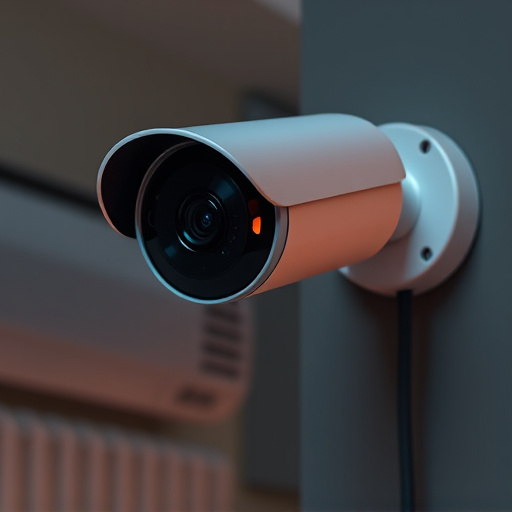Hidden security cameras, seamlessly integrated into everyday objects like picture frames or rocks, offer discrete yet powerful surveillance with remote access via apps and internal storage. They feature motion sensors, heat detectors, and audio recording capabilities for enhanced home and business security, crime prevention, and evidence gathering. Strategic placement is key, with indoor options hidden in corners, behind pictures, or electrical outlets, and outdoor applications using landscaping, fake rocks, or weatherproof enclosures. Despite legal considerations and privacy concerns, these cameras provide significant benefits for homeowners, deterring intruders and offering peace of mind. Staying informed about common hiding spots, performing regular inspections, investing in motion-activated detection, keeping homes well-lit, and updating security systems further enhance protection against unauthorized access attempts and privacy threats.
Uncover the power of hidden security cameras—a discreet yet powerful tool for enhancing home protection. This comprehensive guide explores the intricacies of these devices, from their types and ideal placement to legal aspects and privacy considerations. Learn how to leverage the benefits of a hidden camera system while also equipping yourself with detection tips to identify and prevent potential intrusions. Discover why integrating this technology is a smart step towards securing your peace of mind.
Understanding Hidden Security Cameras: A Comprehensive Overview
Hidden security cameras, also known as covert cameras or spy cameras, are a sophisticated and discrete form of surveillance technology. These devices are designed to be almost invisible, blending seamlessly into their surroundings, whether it’s a small pinhole camera hidden behind a picture frame or a motion-activated sensor disguised as a rock. Understanding how they work and their various applications is essential in today’s world where privacy and security concerns are ever-present.
These cameras operate quietly and efficiently, often powered by batteries or external power sources, and can be remotely accessed via apps or recorded footage stored internally. They come with different detection capabilities, including motion sensors, heat detectors, or even audio recording functions. This technology offers both homeowners and businesses a powerful tool to protect their property, deter crime, and gather evidence discreetly.
Types and Placement of Hidden Cameras for Optimal Security
Hidden security cameras, also known as covert surveillance systems, come in various types tailored for specific needs and environments. These range from tiny mini cameras that can be easily concealed within everyday objects to more sophisticated wireless models that offer motion detection and real-time video streaming. One of the key considerations when choosing a hidden camera is its placement for optimal security.
Strategic placement is crucial for effective surveillance. For indoor settings, discrete locations like corners, behind pictures or mirrors, or inside electrical outlets can provide unobtrusive monitoring. Outdoor applications may require hiding cameras in lush landscaping, fake rocks, or weatherproof enclosures to blend in with the environment while capturing footage of entry points, driveways, and yards. Proper placement ensures that blind spots are minimized and potential intruders are deterred by the knowledge that their actions are being recorded.
Legal Considerations and Privacy Concerns Regarding Hidden Cameras
The use of hidden security cameras, while offering enhanced surveillance and peace of mind for homeowners and businesses, raises significant legal considerations and privacy concerns. The legality of installing such devices varies across jurisdictions, with some areas having strict regulations governing their use. For instance, many regions require explicit consent from individuals being monitored and clearly communicate the presence of cameras through visible signage. Violating these laws can lead to severe penalties, including fines and potential criminal charges.
Privacy is a paramount issue, as hidden security cameras capture intimate and personal moments that could be exploited or misused without the subject’s knowledge. It’s crucial for camera owners to understand their rights and responsibilities, ensuring they use these devices ethically and within the boundaries of the law. Regular reviews of local legislation and consultation with legal experts are essential to navigate the complex landscape surrounding hidden security cameras.
Benefits of Installing a Hidden Security Camera for Home Protection
Investing in a hidden security camera offers numerous advantages for homeowners seeking enhanced home protection. These discreet devices provide an extra layer of safety, allowing you to monitor your property from anywhere and at any time. With advanced technology, they capture high-resolution footage, ensuring clear images even in low-light conditions. This is particularly beneficial for deterring potential intruders, as the knowledge that their actions are being recorded can act as a powerful deterrent.
Hidden security cameras also provide peace of mind by enabling you to keep an eye on your home while you’re away. You can remotely access live feeds, ensuring everything appears secure and allowing you to address any potential issues promptly. Additionally, these cameras often come with motion detection features, triggering alerts when suspicious activity is detected, so you never miss a moment.
Detecting and Preventing Hidden Cameras: Tips for Homeowners
Detecting and preventing hidden security cameras is a growing concern for homeowners, as technology advances and privacy becomes a more pressing issue. One of the first steps in safeguarding your home is to stay informed about common hiding spots. These include peepholes, smoke detectors, light switches, clock radios, and even fake fire alarms—all potential locations where a hidden camera could be installed. Regularly inspecting these areas with a keen eye can help identify any suspicious devices.
To enhance security, consider investing in motion-activated cameras or those with advanced detection features. These technologies can alert you to any unauthorized access attempts. Additionally, keeping your home well-lit and ensuring visible exterior coverage can act as a deterrent. Regularly updating security systems and staying informed about the latest in privacy protection is essential for maintaining a safe and secure living environment.
